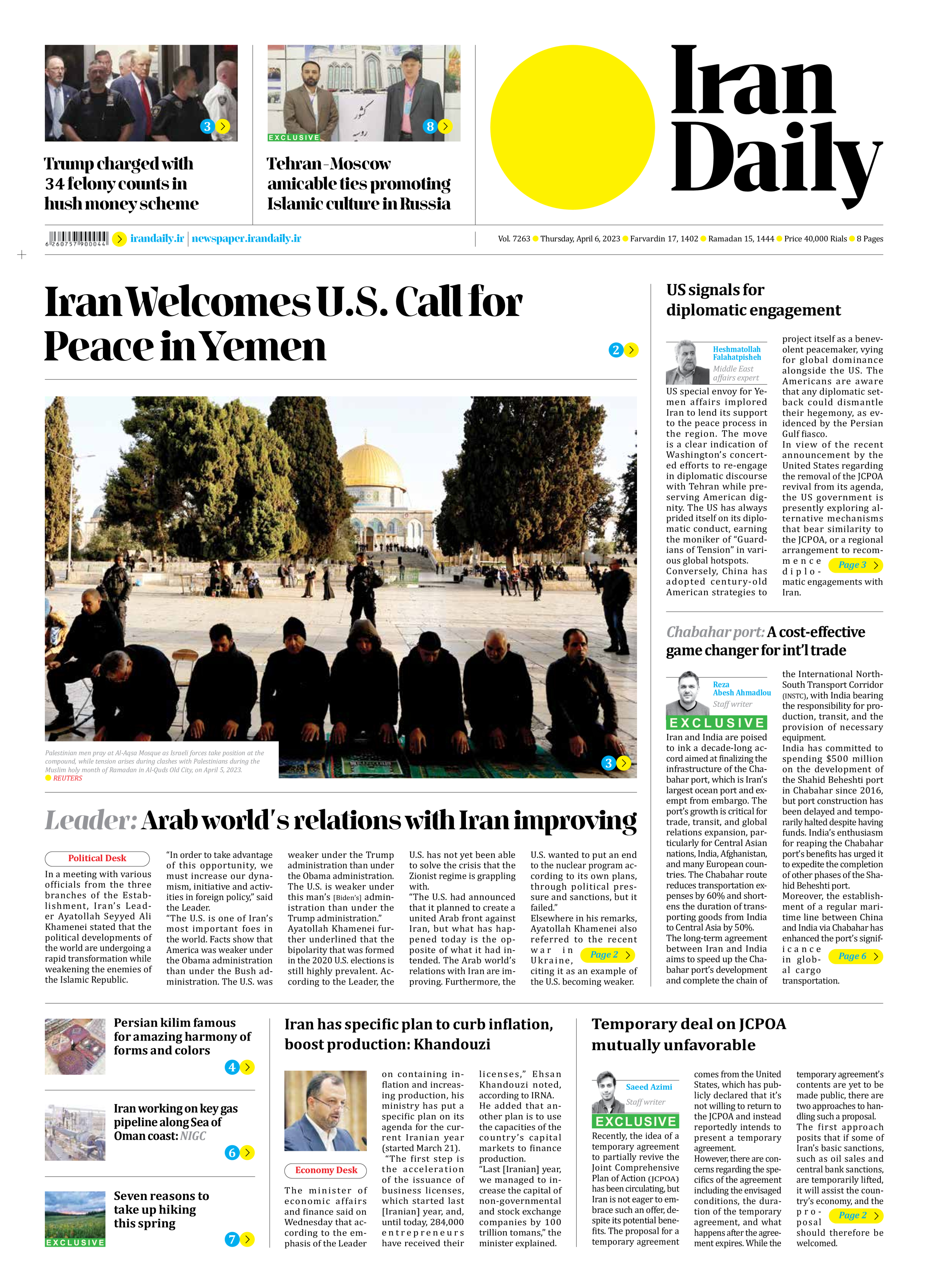
Chabahar port: A cost-effective game changer for int’l trade
Reza Abesh Ahmadlou
Staff writer
Iran and India are poised to ink a decade-long accord aimed at finalizing the infrastructure of the Chabahar port, which is Iran’s largest ocean port and exempt from embargo. The port’s growth is critical for trade, transit, and global relations expansion, particularly for Central Asian nations, India, Afghanistan, and many European countries. The Chabahar route reduces transportation expenses by 60% and shortens the duration of transporting goods from India to Central Asia by 50%.
The long-term agreement between Iran and India aims to speed up the Chabahar port’s development and complete the chain of the International North-South Transport Corridor (INSTC), with India bearing the responsibility for production, transit, and the provision of necessary equipment.
India has committed to spending $500 million on the development of the Shahid Beheshti port in Chabahar since 2016, but port construction has been delayed and temporarily halted despite having funds. India’s enthusiasm for reaping the Chabahar port’s benefits has urged it to expedite the completion of other phases of the Shahid Beheshti port.
Moreover, the establishment of a regular maritime line between China and India via Chabahar has enhanced the port’s significance in global cargo transportation.
In December, the first container ship with a 6,500 TEU capacity docked in the Chabahar port, signaling the port’s strategic value in Iran’s maritime trade activities. The regular container line between Chabahar port and the ports of India and China will transport Iranian and North-South Corridor-related transit goods.
The Chabahar port, located strategically on the Sea of Oman, links Afghanistan and other landlocked countries from Central Asia to the Indian Ocean, providing one of the best transit routes due to its geographic position. Five years ago, Iran, India, and Afghanistan signed a strategic agreement to establish an international transit and transport corridor called the “Chabahar Agreement,” with the goal of making Chabahar port the hub of transit, energy, and trade in the region.
The new 10-year agreement between Iran and India supersedes the previous contract and extends automatically for ten years. The global importance of this pact highlights the port’s value in the international transportation of goods. The deal is predicted to establish more business and economic ties between Iran and India, Central Asian nations, and Europe.
Despite India’s investment commitment to the Shahid Beheshti port’s development since 2016, progress has been slow due to delays and suspensions. To expedite port construction, a short-term agreement was reached with India.
Nevertheless, the Iranian government has devised a new strategy to hasten Chabahar’s progress. The long-term agreement between Iran and India will be based on this plan. Currently, the Indian side (IPGL company) oversees the unloading and loading of goods at Shahid Beheshti Port of Chabahar with a short-term contract. The Indian side will supply strategic equipment following the finalization of the long-term BOT (Build-Operate-Transfer) investment agreement in line with the Iran-India joint memorandum of understanding.
The Chabahar route decreases transportation costs by 60% and reduces the time for transporting goods from India to Central Asia by 50%, prompting India to hasten the completion of other phases of the Shahid Beheshti port.
The regular sea route between China and Chabahar is anticipated to bring significant economic gains to all parties involved. For China, it provides a faster and more cost-effective approach to reach markets in Central Asia and beyond, reducing reliance on congested and more expensive sea routes through the Strait of Malacca. For India, it provides an alternative to land-based routes via Pakistan, fraught with political tensions and security issues. For Iran, the development of Chabahar port presents a significant opportunity to boost its economy and improve its relations with neighboring countries and international partners.
The completion of the North-South Corridor will connect the Iranian port to Russia and Europe through Azerbaijan, and also to the Persian Gulf and the Arabian Sea via the Hormuz Strait. This will enable the transportation of goods between the South Asian, Central Asian, and European markets with greater efficiency and lower costs.
Moreover, the Chabahar port is not only important for the transportation of goods but also plays a vital role in regional security. It can serve as a hub for humanitarian aid and disaster relief operations, making it a critical component of regional stability and cooperation. In addition, the development of Chabahar port can also enhance the region’s energy security by providing a secure and reliable route for the transportation of oil and gas.
The signing of the 10-year agreement between Iran and India for the completion of the Chabahar port infrastructure is a positive development that can bring substantial benefits to all parties involved. It underscores the importance of regional cooperation, trade, and connectivity, which can help promote peace and prosperity in the region. As such, it is essential to ensure that the development of Chabahar port and the North-South Corridor continues to progress smoothly, free from any disruptions or delays.







